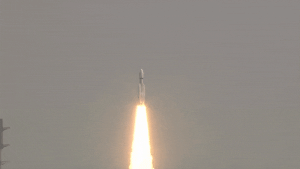India’s Major Space Breakthrough: C25 Cryogenic Stage Successfully Tested in Orbit
In a significant announcement following the CMS-03 satellite launch, ISRO chief Dr. V. Narayanan revealed the successful in-orbit test of India’s indigenously developed C25 cryogenic stage. This milestone marks the first time ISRO has fired a cryogenic engine thrust chamber in space, providing crucial data on performance in microgravity conditions.
Key Achievements
- First successful in-orbit ignition of C25 cryogenic stage
- Critical data collected on engine performance and stability
- Major advancement for India’s space launch capabilities
Enhanced Launch Capabilities
According to Dr. Narayanan, this breakthrough will enable ISRO to place multiple satellites into orbit with greater precision and efficiency. The enhanced control and thrust from the C25 stage will support heavier payloads and complex deployment missions.
Benefits for Future Missions
The successful test directly benefits flagship programs including India’s human spaceflight initiative and proposed space station projects. This achievement reduces reliance on foreign technology while cutting costs and expanding operational capabilities for deploying advanced communication satellites.
The C25 stage, which serves as the upper stage in the LVM-3 launch vehicle, had previously undergone rigorous ground testing. However, this in-flight demonstration significantly boosts confidence in India’s self-reliant cryogenic engine technology.
Combined with the launch of CMS-03 – ISRO’s heaviest communication satellite – this development solidifies India’s position as a formidable space power, showcasing indigenous innovation in propulsion systems and heavy-lift rocket technology.
Dr. Narayanan emphasized that the C25’s successful test flight heralds a new era of efficient, precise, and autonomous satellite launches by ISRO, marking a transformative moment for India’s space ambitions.





